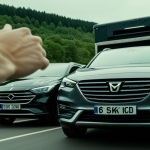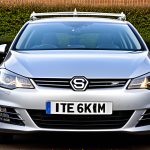Overview of the UK EV Charging Network
The United Kingdom’s EV charging infrastructure has become a vital component of the nation’s push towards a more sustainable transport system. With an increasing number of electric vehicles (EVs) hitting the roads, there’s a significant emphasis on expanding and enhancing the UK charging stations network. This development is not only facilitating long-distance travel for EV owners but also ensuring that charging access is equitable and efficient across the country.
To support this growth, several government initiatives have been rolled out, focusing on both urban and rural areas. These initiatives aim to address the challenges of charging access in less populated regions while promoting public and private partnerships to accelerate infrastructure development. Financial incentives, subsidies, and strategic plans play a critical role in supporting the charging network expansion, making EVs a more appealing choice for potential buyers.
This might interest you : Top-Rated Car GPS Trackers in the UK for 2023: Your Ultimate Guide to the Best Systems
According to recent statistics, the rise in EV adoption necessitates a robust and expansive charging network to meet the charging needs of these vehicles. As more consumers switch from traditional to electric cars, the demand for accessible and reliable charging stations is spiking. This surge underscores the importance of creating a seamless charging experience, critical in driving the electric revolution forward.
Types of EV Chargers Available
The landscape of types of EV chargers is as diverse as the needs of the EV drivers themselves. Understanding these options is crucial for optimizing your charging experience and ensuring you’re equipped with the most suitable technology for your vehicle.
Also read : Navigating UK Emissions Standards: A Comprehensive Guide to Vehicle Testing Regulations
Slow, Fast, and Rapid Charging Options
EV chargers primarily fall into three categories: slow, fast, and rapid. Slow chargers, typically offering 3 to 7 kW, are suited for overnight charging at home or work, where the vehicle can be left for several hours. Fast chargers provide 7-22 kW, significantly reducing charge times and are commonly found in public settings. Rapid chargers, delivering 43 kW or more, offer the quickest charging solutions but are generally more expensive and found in strategic locations like motorway service areas.
Home Charging vs. Public Charging Stations
When it comes to convenience, home charging is the front-runner, allowing you to recharge your vehicle during downtimes, such as overnight. However, public charging stations are indispensable for longer journeys, ensuring you can travel with the assurance of finding a power source en route or at your destination.
Wireless Charging
The emergence of wireless charging is setting the stage for the next evolution in EV charging technology. Although still in its infancy, this method allows vehicles to charge without physical connectors, simply by parking over a charging pad. The potential for wireless charging is immense, offering unparalleled convenience and highlighting a future where EV charging is as seamless as parking your car.
With these diverse charging options, EV owners can tailor their charging habits to suit their lifestyles, ensuring both flexibility and efficiency.
Finding Charging Points
Navigating the world of EV charging can be daunting, but a wealth of technology is at your fingertips to simplify the process. Finding charging stations quickly and reliably is essential for a smooth electric vehicle experience.
Top Apps for Locating Charging Stations
Smartphone applications have revolutionized how EV drivers locate charging points. EV charging apps like PlugShare, Chargemap, and Zap-Map offer real-time updates, detailed maps, and user reviews to pinpoint available chargers. By tapping into these community-driven platforms, drivers benefit from a wealth of shared experiences and information. These apps not only show the exact locations but also provide insights into charging speed, availability, and compatibility with specific vehicle models.
Using Online Maps for Charging Locations
Beyond apps, traditional online maps play a critical role. Google Maps and Apple Maps have integrated features specifically for EV drivers. These platforms allow users to search for charging stations along their route, ensuring that planning a journey is as easy as a few clicks. This functionality is particularly useful for long trips, reducing anxiety about finding charging stations in less familiar areas.
Integrating with Navigation Systems
In-car navigation systems are also catching up to the trend by integrating charging station data directly. This integration ensures that while navigating, the system can recommend stops at charging points that fit the journey’s timeline and route. Some advanced systems even take into consideration the vehicle’s current battery level and charging history to optimize these suggestions, offering a truly personalized and efficient travel experience.
These technological advancements make finding and using charging stations an intuitive part of owning an electric vehicle, reducing range anxiety and offering peace of mind on the road.
Best Practices for Charging Your EV
Charging your electric vehicle (EV) efficiently ensures optimal performance and longevity of your vehicle’s battery. Adhering to EV charging best practices involves understanding the recommended charging times, maximizing battery lifespan, and implementing charging tips for seamless travel experiences.
Recommended Charging Times
When it comes to charging your EV, timing can significantly affect battery health and efficiency. For different types of EVs, the ideal charging practice is to maintain the battery level between 20% to 80%. If your EV supports it, scheduling slow charging overnight is beneficial as it reduces stress on the power grid and takes advantage of off-peak electricity rates. For frequent travelers, using fast charging sparingly is advised to avoid excessive wear on the battery.
Maximizing Battery Lifespan
To extend your EV battery’s lifespan, keep it at moderate temperatures and avoid frequent full charges. Charging strategies like employing adaptive charging settings and utilizing built-in apps that schedule charging can optimize battery conditioning. Most EVs have installed systems that monitor and maintain the battery’s optimum charging cycle, helping users avoid overcharging and deep discharging.
Tips for Charging on the Go
When on the move, planning ahead is essential. Utilize EV charging apps to find optimal charging points along your route and ensure compatibility with your EV model. Keep an eye on your range and verify the availability of chargers, especially during peak travel times. Carrying a portable charging cable can also be advantageous in case designated charging stations are unavailable.
By implementing these best practices, EV owners can enhance their charging experience while promoting the health and efficiency of their vehicle’s battery, ensuring a reliable and sustainable driving journey.
Future Developments in EV Charging
The future of EV charging in the United Kingdom promises exciting innovations and substantial growth, guided by evolving policies and technological advancements. As the nation accelerates its shift towards electrified transportation, the need for a more sophisticated and comprehensive charging infrastructure becomes increasingly critical.
Insights into Upcoming Government Policies
New government policy changes are set to drive the evolution of the EV charging network. Increased investment in research and development aims to explore novel ideas, such as smart charging grids and universal payment systems, ensuring that electric vehicle owners can seamlessly access convenient and reliable charging services across the UK.
Innovations in Charging Technology
Technological breakthroughs are set to revolutionize the way we charge electric vehicles. One such innovation focuses on charging infrastructure innovations, such as ultra-fast chargers capable of replenishing an EV battery in mere minutes. Additionally, advancements in wireless charging technology could eliminate the need for physical connectors, making charging as simple as parking your vehicle.
Predictions for Network Growth
In light of these policy shifts and charging technology enhancements, experts predict a robust expansion of the UK’s charging infrastructure. This anticipated growth will not only cater to existing EV owners but also encourage more consumers to make the switch by alleviating concerns about charging access and convenience. As a result, the charging network will likely become more integrated, efficient, and user-friendly, heralding a new era in sustainable transport.
Common Challenges and Solutions
Navigating the EV charging network can present various challenges for users, from technical hiccups to limited access. Understanding and addressing these EV charging challenges is crucial for ensuring a smooth and efficient charging experience.
Frequent Issues Encountered by EV Users
EV drivers often face common issues such as inconsistent charger availability, connector compatibility, and slow charging times. These complications can arise due to high demand at popular stations or inadequate infrastructure in certain areas. Occasionally, technical malfunctions in chargers or payment systems can further complicate the charging process.
Solutions and Tips for Troubleshooting Charging Problems
To combat these challenges, proactive measures and troubleshooting tips become essential. Users should familiarize themselves with alternative charging points in their vicinity and ensure their vehicle’s charger compatibility in advance. Carrying a universal adapter could alleviate compatibility issues, while real-time updates from EV charging apps help avoid crowded stations. Additionally, regular updates and checks on charger systems can minimize downtime due to technical failures.
Importance of Community Forums
Engaging with community forums can offer invaluable insights and solutions shared by fellow EV owners. These platforms serve as a knowledge hub where users can exchange experiences and advice on overcoming charging infrastructure obstacles. Regularly participating in these forums not only enhances individual understanding but also contributes to shaping a more resilient and efficient charging network.
Engaging Visuals and User-Friendly Navigation
Creating an intuitive experience for electric vehicle (EV) users involves integrating user-friendly content with engaging visuals. This combination is essential for effectively conveying complex charging technology details and enhancing the overall experience.
Utilizing Interactive Maps
Interactive maps are a powerful tool, offering EV users a visual and interactive method to locate charging stations. These maps allow users to zoom in on specific areas, view real-time availability, and click on specific points for more detailed information about the types of EV chargers available. By incorporating layers that show slow, fast, and rapid charging options, users can make informed decisions about their charging needs. This capability is crucial in providing a comprehensive charging network overview, making it easier for users to plan their EV journeys.
Content Layout for Effective Information Delivery
A well-structured content layout is vital in delivering information in a clear and simple manner. Using a combination of headings, bullet points, and short paragraphs can break down complex information about charging technology and improves navigation. For example, categorizing information under headings like “Home Charging vs. Public Charging Stations” helps users quickly find the details they need. Ensuring that content is organized logically aids in understanding and retaining information, fostering a more engaging learning experience.
Importance of Visuals in Explaining Charging Options
Visuals play a crucial role in explaining charging options effectively. Diagrams illustrating the differences between slow, fast, and rapid chargers, or infographics showing EV charging best practices, make the information more digestible. By using visuals to convey technical aspects of charging technology, users can more easily grasp the intricacies involved, aiding in their decision-making process. This approach not only enhances comprehension but also encourages users to explore various EV charging solutions with confidence.
Incorporating interactive maps, structured content, and strategic visuals in EV-related content delivers a seamless and engaging experience for users, helping them navigate the complex world of EV charging infrastructure with ease.







